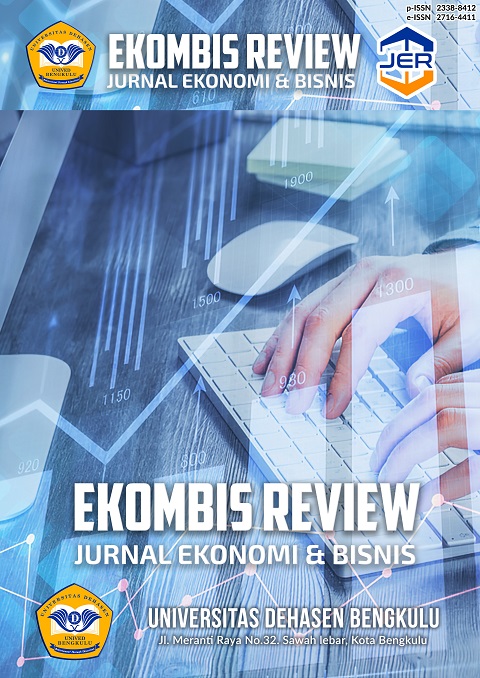Predicting Future Cash Flows Using Autoregressive Integrated Moving Average (ARIMA)
Abstract
This study aims to provide empirical evidence of the ability of operating cash flows to predict future cash flows, ability of net income to predict future cash flows and proves that net income is better at predicting future cash flows compared to operating cash flows. This study was tested using autoregressive integrated moving average analysis. The samples used in this study are tourism, hotel, and restaurant companies listed on the Indonesian Stock Exchange in 2018-2022. The sample in this study was selected using purposive sampling method with a total sample of 418 observations. Before forecasting, the stationarity of the data is seen through ACF and PACF plots and unit root test. The results showed that the operating cash flow data did not meet the assumption of stationarity, so the first differencing process was carried out so that the data obtained was stationary so that the best operating cash flow model for predicting future cash flows was the ARIMA model (3,1,0) and for net income data, it had fulfilled the stationarity assumption, so it was not the differencing process is carried out so that the best model of net income is in forecasting ARIMA's future cash flows (3,0,0).
Downloads
Copyright (c) 2024 Vika Fitranita, Rola Tri Rahayu, Eddy Suranta, Nikmah Nikmah, Halimatusyadiah Halimatusyadiah

This work is licensed under a Creative Commons Attribution-ShareAlike 4.0 International License.
An author who publishes in the EKOMBIS REVIEW: Jurnal Ilmiah Ekonomi dan Bisnis agrees to the following terms:
Author retains the copyright and grants the journal the right of first publication of the work simultaneously licensed under the Creative Commons Attribution-ShareAlike 4.0 License that allows others to share the work with an acknowledgement of the work's authorship and initial publication in this journal
Submission of a manuscript implies that the submitted work has not been published before (except as part of a thesis or report, or abstract); that it is not under consideration for publication elsewhere; that its publication has been approved by all co-authors. If and when the manuscript is accepted for publication, the author(s) still hold the copyright and retain publishing rights without restrictions. For the new invention, authors are suggested to manage its patent before published. The license type is CC-BY-SA 4.0.
EKOMBIS REVIEW: Jurnal Ilmiah Ekonomi dan Bisnis is licensed under a Creative Commons Attribution-ShareAlike 4.0 International License.














